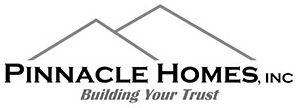Setting a budget for your remodeling project is an important, but often difficult, part of the process. Costs can vary widely, depending on what exactly is being done and, in terms of quality, the overall approach to the project. Here are 6 of the top factors to consider when setting a home remodel budget.
1. Materials
The materials being used in a remodeling project account for the bulk of costs in most cases. Consider the type and quality of what’s being used. This could include the flooring, tile, counter tops, cabinets, custom built items, and more.
2. Project Size
It’s easy to slap an estimate on the average cost to remodel a kitchen or bathroom, or finish a basement, but one homeowner’s basement could be triple the size of another. The size and scope of a given project are huge factors in its overall cost.
3. Appliances
This applies mainly to kitchens, although it can also factor in with other home remodeling projects. Big-ticket appliances like refrigerators, stoves, and dishwashers contribute greatly to total cost; and there’s a huge price range for these appliances.
It’s also necessary to consider matching the quality of other materials, like counter tops and cabinets, that surround those high-end appliances.
4. The Contractor
The remodeling contractor chosen for a job has a huge bearing on its price. This isn’t about whether they’re offering a “fair” deal, but rather, it’s about the quality, craftsmanship, and expertise of a given remodeler. One may be great for completing generic, solid projects with no frills. Another may focus on high-end, premium projects, with every small detail artfully approached. Understand which type of contractor you need and hire accordingly.
5. Specialty Contractors
While a general contractor may be able to complete a range of projects on his own, many projects also require specialty contractors, such as electricians, plumbers, or HVAC specialists. The more contractors that need to be hired, the greater the overall costs of your home remodeling project will be.
6. Extras
Always plan for the unexpected. Factor in about 10% of a project’s estimate as a contingency to cover extras that may arise unexpectedly along the way. Older homes, for example, can have many “hidden” problems not even the best remodeling contractor could be aware of before getting started on a project.
Once you have your budget in place and are ready to begin your project, call us. We’re ready to bring your renovation vision to reality.
Editor’s Note: This article was originally published in January 2015 and was updated in July 2020 for accuracy.

